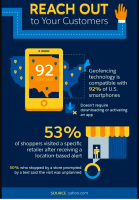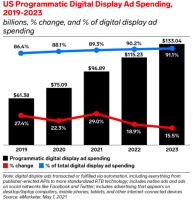Leading transportation platforms such as Uber, Lyft, and Beat leverage geotargeting, geofencing, and other cutting-edge technologies strategically to boost revenue and enhance brand visibility.
Would you like to learn how to create a virtual escalator to reach your customers at the right time and place? How about winning customers who would be interested in booking a ride, or at least downloading your app? We will show you how to put together an ad campaign that will make you the next taxi app ready for users’ love expressed through multiple downloads and bookings.
Scroll down to learn what programmatic advertising is and how you can use it to leverage hyper-local geo targeting techniques. We will also talk about famous companies using these technologies to their advantage.
Nail down your target audience, as top transportation apps do
Before we go down to the juicy details related to programmatic advertising, let’s first talk about the marketing strategies commonly used by ride-hailing companies. They are just as integral to the success of your campaigns.
Create detailed buyer personas
Ride-hailing apps need user personas for both drivers and users. Your rideshare driver may be someone who has worked with other taxi companies and is well-versed in the industry, while your target user could be a tech-savvy millennial with a high-paying job.
Build a strong brand
You need to build a brand that people can trust—only then will they patronize your services. The best way to do this is to foster brand familiarity. You will want to increase your brand’s exposure and make it recognisable with consistent messaging and distinctive visuals.
You must also pay close attention to brand positioning or what sets you apart from your competitors. You may be more affordable than Uber, or you may offer premium services fit for VIPs. Lyft, for instance, targeted younger generations with a casual and friendly vibe. They set the tone with their slogan, “Riding is the new driving,” and a pink mustache attached to the ride-hailing cars.
Leverage the power of social media
There is no better way to inject your brand into people’s consciousness than to go where they hang out. And that’s on social media channels. So, it is no surprise that rideshare companies are still bringing their A-game to social networks. Treat social media channels as valuable assets allowing you to nurture a highly engaged and profitable audience by adapting your content to specific regions.
Well-targeted paid ads can also do wonders for your marketing campaigns. A/B testing can help ensure you are reaching the right audience and sending messages that resonate. Lyft’s creative team tests their Facebook Dynamic Ads and video ads at scale to ensure their copy is always on point.
Go local
Even global ride-hailing companies like Uber and Lyft need to target their customers by region. The reason? Different localities have varying needs. For instance, in highly congested India, Uber markets two-wheeler vehicles, an option they don’t offer in the United States.
Local marketing is crucial for newcomers eager to stand apart from the big-name players. Coastal Rides, a ridesharing company based in British Columbia, Canada, appeals to the locals with brand messaging emphasizing their knowledge of and close ties to the local community.
Go for geofencing, geotargeting, and programmatic advertising
Localisation is the name of the game when it comes to marketing ride-hailing services. Picture this: you just landed at your local airport and need a ride home but don’t have your car. Almost instantly, you receive a notification offering a rideshare service. All you have to do is click on it and hit the road.
It’s no wonder 71% of consumers choose brands that offer personalised experiences. They are, after all, much more helpful. And marketers are willing to deliver, with 84% tapping into the power of location data and 94% looking to do so in the future.
So, what advertising tools can help you make the most out of localisation? Here are some hot marketing trends that should be on your radar.

Geofencing
The airport scenario shows you just how you can benefit from geofencing—a type of ad targeting that lets you create a virtual perimeter around a specific location. Anyone who steps into the fenced-in location becomes an instant target for your ads. And consumers are more likely to complete an action after receiving a message when they head to a specific location. Geofencing brings a host of benefits, so let’s see them all:
- Allows to reach customers where and when they need your service
- Makes the ad experience hyper-personalized
- Boosts revenue
- Let’s stay ahead of competitors
Don’t stop there. You’ll open up a world of benefits with geotargeting as well.
Geotargeting
Location-based ads make your marketing efforts 20x more effective. And you can take this tactic a step further with geotargeting. This type of advertising allows you to specify broader geographical parameters, such as a country, province, or city. You can also refine your target audience with additional criteria based on their demographics and behaviors.
For example, you can target consumers located in your city and frequent a coffeehouse known to attract high-earning millennials.
Geotargeting brings the following benefits:
- Reaching a narrower and more relevant audience
- Making the most out of your budget by excluding irrelevant segments
- Gaining insights that help you further refine your audience parameters
Geofencing and geo targeting work exceptionally well as part of a broader programmatic ad campaign.

You can integrate geofencing and geo targeting into your programmatic campaign. Programmatic advertising is a technology that automates the process of purchasing ad placements. It allows advertisers to buy ad inventory and bid on a specific audience in less than 100 milliseconds.
To set your programmatic ad campaign, you’ll have to specify your targeting criteria and tweak your copy accordingly. You can automate the process using a demand-side platform (DSP), software that connects you to multiple ad exchanges so you can buy targeted traffic at scale from a network of publishers.
Use cases for geotargeting ad campaigns
These cases will show you companies benefiting from their programmatic ad campaigns.
Beat
Beat, the fastest-growing ride-hailing app in Latin America, tapped into the power of programmatic advertising to grow its user base. They relied on the advanced targeting capabilities of Edge226’s Peak DSP, programmatic user acquisition, and retargeting platform. Run by the in-house creative and experienced expert management team, the campaign yielded the following results:
- A 5x boost to the rate of driver first-ride completions
- 70% increase in install volume in their new Buenos Aires market
The Beat engineering team is constantly experimenting with programmatic techniques to better track key metrics around traffic patterns and improve conversion rates.
Cabify
Cabify, a Spanish ridesharing company, uses programmatic purchasing and native advertising (ad materials that mimic the publication’s editorial content) to drive app downloads.
They leveraged Zemanta, a demand-side platform, to meet their conversion goals of increasing app installs and first trips taken. The campaign emphasized geo (specific target cities) and device targeting (mobile website vs in-app). It brought the following results:
- A cost-per-click (CPC) rate that was 3.7% lower than the initial goal
- A 50% month-over-month increase in app downloads
Programmatic advertising has undeniable value for ride-hailing companies. But it’s not made for this industry alone. Other business sectors benefit from automated media buying, too.
Programmatic Advertising is in High Gear
Programmatic advertising is not only beneficial to ridesharing apps. Many other mobile apps can enjoy the advantages of automated media buying, including those intended for hotel booking, retail business, food delivery, and media. Companies like the Intercontinental Hotel Group (IHG), Lacoste, Uber Eats, and The Economist are already reaping its benefits.
Now it’s high time to talk about the tools you’ll need to run your own programmatic ad campaigns.
The tools you’ll need for programmatic advertising
You need access to a DSP that will power up your programmatic advertising and enable geofencing and geo targeting. You can work with an agency for this or take your media buying in-house.
Having your own DSP gives you complete control of your media buying. You won’t have to worry about an agency purchasing fraudulent ads or misrepresenting your campaign results. Uber had these issues with the Dentsu-owned mobile ad agency they used to work with. So, it’s no surprise that they took their programmatic advertising in-house.
However, going in-house is no longer just for the big players. You can have your own fully customized DSP with all the features you need for geofencing and geo targeting without shelling out the big bucks. All you’ll need in this case is to choose a cost-effective white-label DSP.










